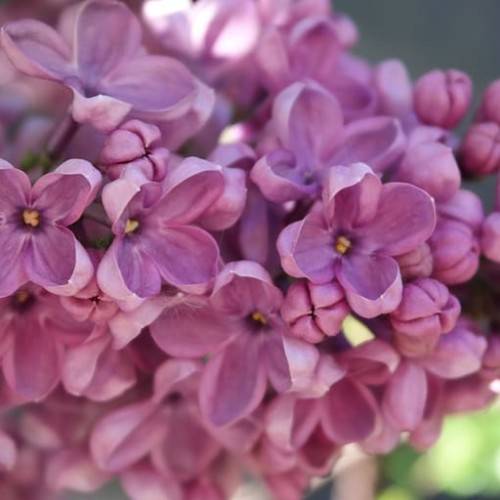
common lilac
Syringa vulgaris 'Marie Frances'
Cycle:
Perennial
Watering:
Average
Hardiness Zone:
3 - 7
Flowers:
Flowers
Sun:
Full sun
Leaf:
Yes
Growth Rate:
Low
Maintenance:
Low
Care Level:
Moderate
watering
Common lilacs should be watered every 1 to 2 weeks during the growing season (spring and summer). The soil should be kept moderately moist, not soggy, but not too dry either. During dry spells, you may need to increase the frequency of watering. When watering, avoid getting the foliage wet, as this can cause fungal diseases. Choose a day when there is no rain in the forecast. Start by soaking the soil around the base of the plant until the top 2 inches of soil are moist. If needed, apply a thin layer of mulch around the base of the plant to help retain moisture.
sunlight
Common lilac (Syringa vulgaris 'Marie Frances') needs at least 4-6 hours of direct sunlight daily. The best time of day for the plant to receive sunlight is during morning and late afternoon, when the sun is not at its hottest. If the plant is not receiving enough sunlight, its flowers and leaves may be pale or weak, and its growth will be stunted. On especially hot and sunny days, the common lilac likes some shade in order to avoid wilting.
pruning
Common lilacs should be pruned in late winter or early spring, just before the new growth appears. When pruning, it is important to remove the old wood at the base of the plant. This will promote new growth and ensure that the lilac remains healthy and robust. Additionally, it is important to remove any dead, diseased, or broken branches. For larger plants, prune 1-third of the largest stems to the ground, and then thin out the remaining branches to produce a plant with an airy, open form. When cutting back the stems, try to maintain the natural shape of the lilac and remove any vertical or horizontal branches that are overcrowding other branches. After pruning, be sure to remove the branches and debris from the area.
